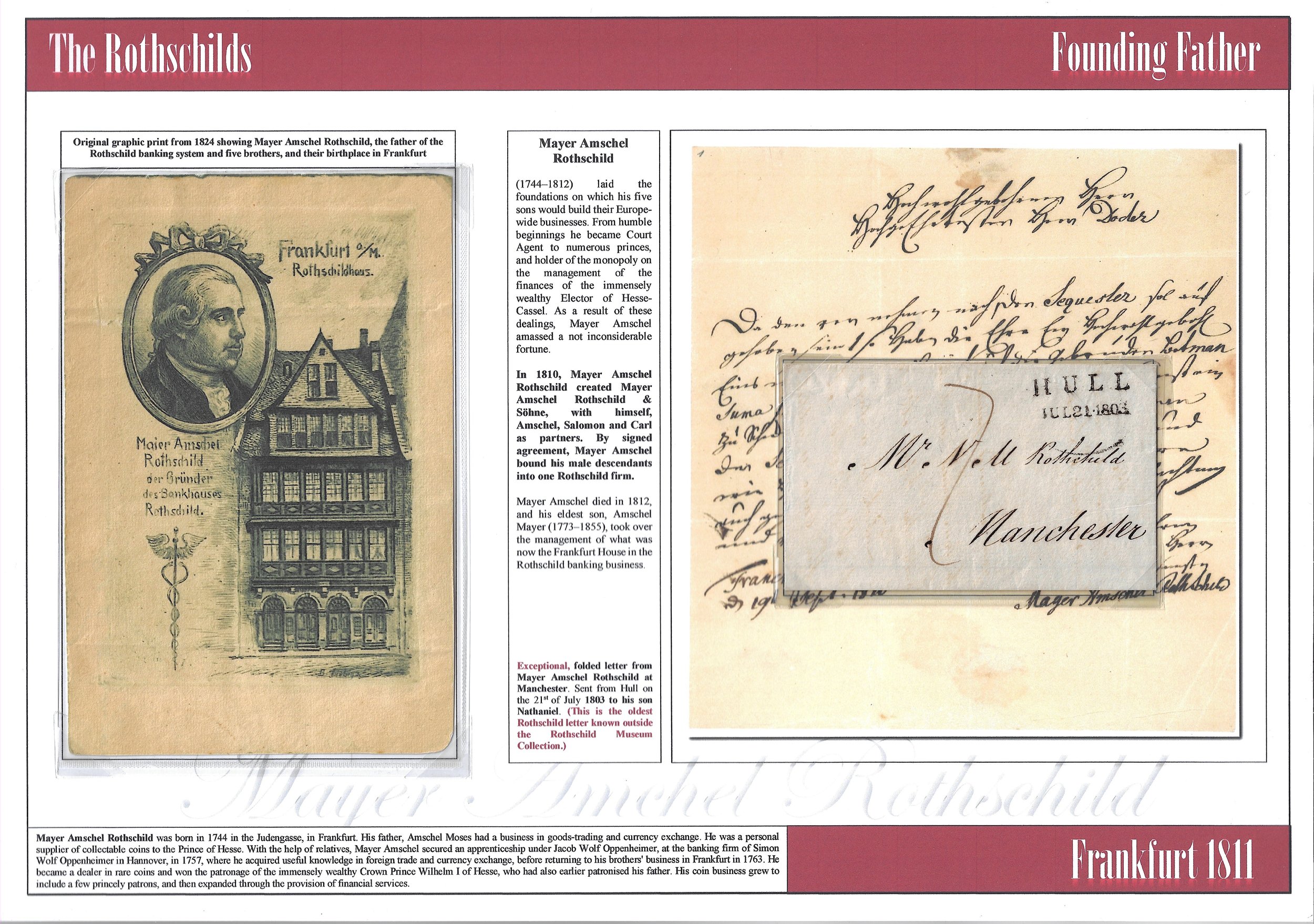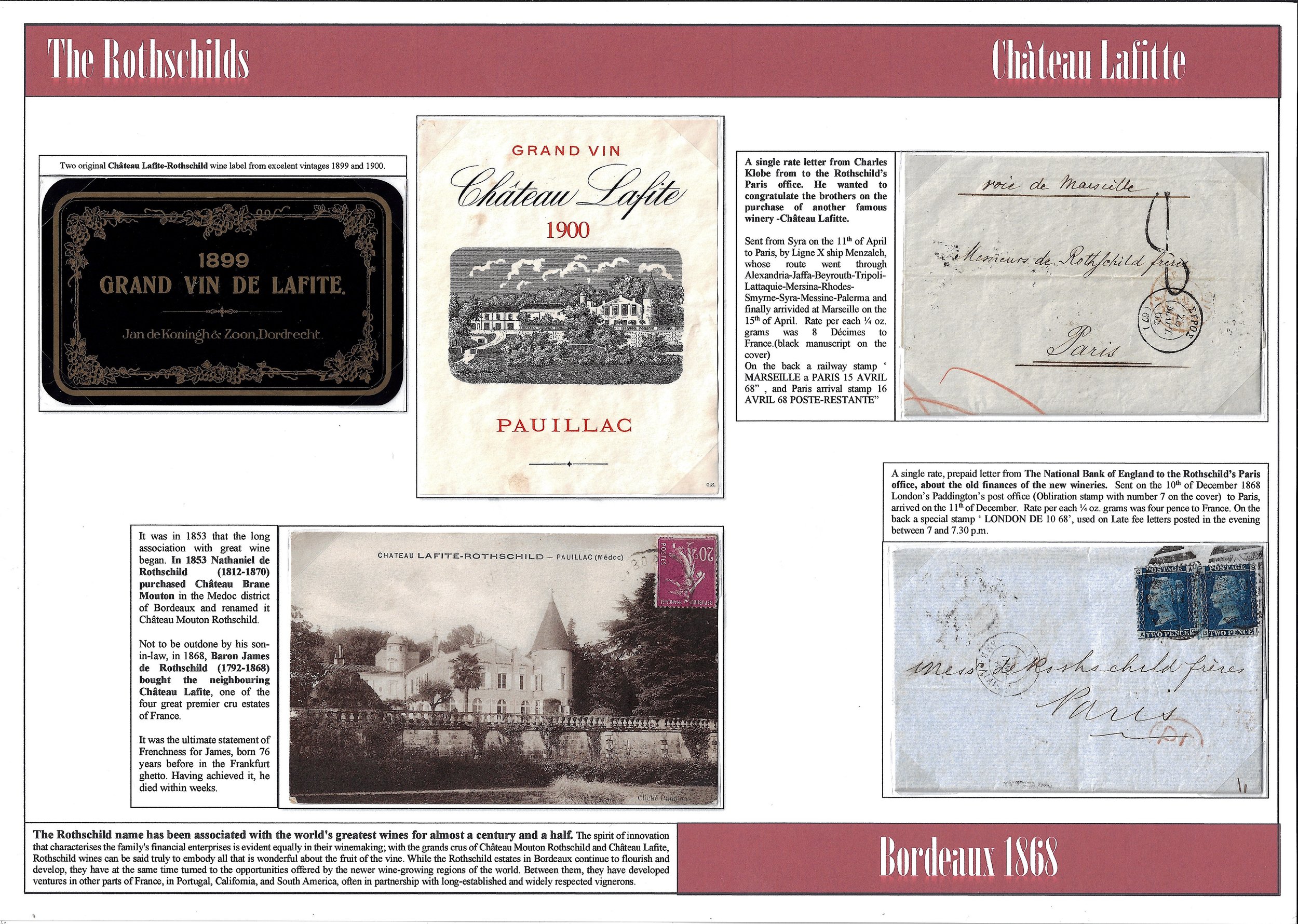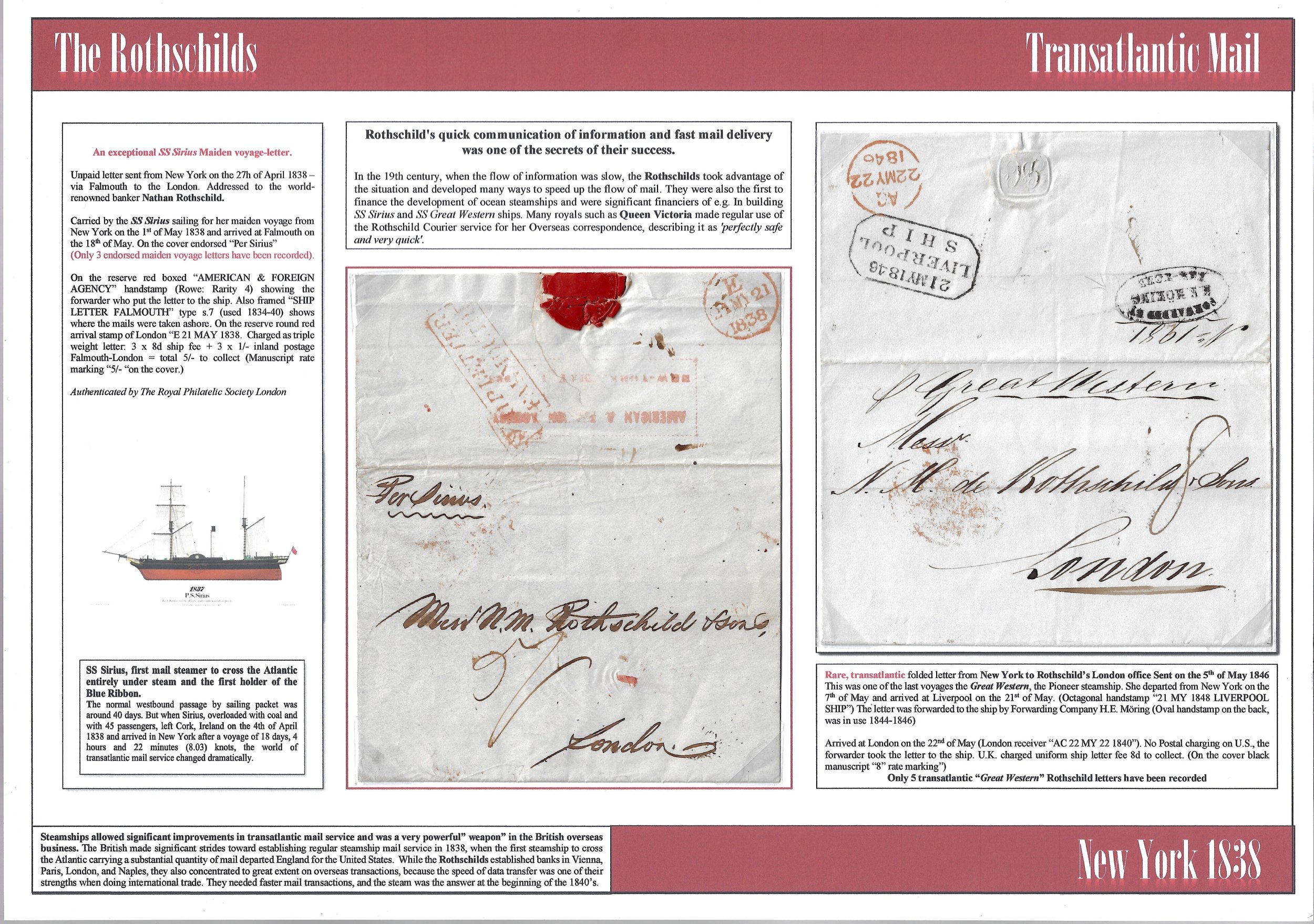THE ROTHSCHILDS - The Bankers of the World 1790-1890
Today (1.11.2021) I started this new Rothschild -collection from scratch together with three other interesting new topics: Transatlantic Mail 1830-1870, France Ceres Mazelin 1945 and Austria Censured Mail 1945-1953 - all without a single item, without deeper information about the subject and with the goal of creating a gold medal collection in 12 months - I do like challenges!
When I am building a new thematic collection, I find myself doing the following 10 steps :
1. I choose a topic that interests me.
Done: The actions of the Rothschild family in the 19th century are significant for the development of Europe and what it is today. I also once wrote a book about Château Mouton-Rothshild, so I had sidelined the subject a bit earlier.
The choice of subject turned out to be more difficult than I had thought - auctions and stamp shops usually indicate their items by mentioning the country, region, or year, but almost never the name of the sender or recipient of the letter. I have already browsed through tens of thousands of letters, scoped the names on the covers - happily good items have been already found.
2. I set a schedule for myself and set qualitative and quantitative goals, as well as a budget.
Done: My goal is five frames = 80 exhibition pages. That is an ambitious goal for the reasons already mentioned, so I am pleased if I can reach collection of 4 frames as well. The budgets for my previous collections have been € 5,000-€ 75,000. Now I set a limit of € 15,000. Most of the items are from pre-stamps period and thus lower in cost. So far, the most expensive item I found cost € 1,200 and the cheapest € 50.
3. I am looking for all possible written material that I can find on the chosen topic.
Done: I ordered 5 books from Amazon about the stages of the Rothschild family - two of which I have already read reinforced the feeling that I have made an interesting and hopefully rewarding choice of topic.
4. I start looking for possible ready-made collections on the subject, which could serve as examples.
Done: I searched all sources for ready-made collections, and I also inquired from the Rothschild family archives, if there were any philatelic collections on the subject — none found. One reason for sure is that the archives of the family are very comprehensive and thorough, and there is not much material left out of it. At first, this was a bit of depressing news, but quickly the excitement of the pioneering work took the victory.
5. I start acquiring basic materials on the subject.
Now, two months after the start of the collection, I’ve managed to find more than 40 items already- surprisingly, I found six items in my own “stocks”. I have already purchased other items from 11 different auctions and the search continues. I think I am able to create the first templates for the exhibition pages before Christmas.
6. Start building the first collection pages with basic information.
The first A3 exhibition pages are getting done, sooner than I though:)
7. When there are enough basic materials, I start sketching exhibition pages and adding postal historical and other related information to them.
The first A3 lay-outs are done, - these are 90% done - will finalize and complete the postal info before the exhibition.
8. Once the templates for the exhibition pages are ready, I will start looking for and acquiring the missing items as well as the more expensive top items. Done
9. Once all the items needed for the exhibition have been found, I will finalize the exhibition pages, especially confirm and update written information, postal routes and taxes. Done
10. When the exhibition pages are ready, I will still try to find a few particularly rare items that would complete the collection and which make it possible to obtain a Gold Medal. Done
I will share all of the above steps for creating all four collection on this site, from scratch to the finished collection. I hope they help you to create your own collection.
I also try to show that an exhibition collection can be built without years of work, so perhaps new topics can be tackled with a slightly smaller threshold without the fear that it will take a decade to finish the collection. After all, diversity is one of philatelia’s greatest gifts - topics that are enough to dive for a lifetime.
1.11.2021 - Start from zero
23.8.2022 - The 5-frames collection is now ready for exhibitions
9.9. 2022 On first appearance, It received Large Silver Medal
7.8. 2023 Collection has been 100% remade for Open Philately-class 2024 exhibitions.
14.4.24 On the second appearance, first open philately-version of this collection received Large Vermeil + special award
2.6.2024 On the third appearance, improved version received Gold Medal(88 points)+special award. ( Nordia2024)
26.10.2024 The fourth version with six frames received Gold Medal - Stamp Forum -exhibition 2024 and Large Vermeil from Uruguay2025
The Rothschild family, one of the most prominent and influential banking dynasties in Europe, played a significant role in European finance and politics during the 19th century. Their rise to power and influence can be attributed to several key factors:
1. Banking Empire: The Rothschild family established a vast banking network across major European capitals, including Frankfurt, London, Paris, Vienna, and Naples. These banking houses became central to the financing of European governments and industries.
2. International Network: The Rothschilds were known for their ability to maintain close and efficient communication across their various banking houses. This international network allowed them to capitalize on financial opportunities and swiftly respond to economic and political developments.
3. Financing Wars: The Rothschilds provided financing to various European governments during times of war, including the Napoleonic Wars and the Crimean War. Their financial support was critical to these nations' war efforts, and in return, they received interest payments and government bonds.
4. Bond Market Innovations: The Rothschild family played a pivotal role in the development of the bond market. They introduced concepts like government bonds, which allowed governments to borrow money from the public. Rothschild bonds, considered safe investments, became highly sought after by investors.
5. Information Advantage: Thanks to their network of agents, the Rothschilds had access to information ahead of other market participants. This allowed them to make informed investment decisions and take advantage of market trends before others were aware of them.
6. Diplomacy and Influence: The Rothschilds were often sought after for financial advice by European monarchs and politicians. Their influence extended into diplomatic circles, where they could offer counsel and sometimes exert indirect political pressure.
7. Cultural Integration: Unlike some other wealthy families of the time, the Rothschilds actively integrated into the cultures and societies of the countries where they operated. They married into aristocratic families and became part of the social fabric.
8. Philanthropy and Public Image: The family also engaged in philanthropic endeavors, which helped enhance their public image. They contributed to various charitable causes, including education and the arts.
9. Longevity and Succession Planning: The Rothschild dynasty was known for its meticulous succession planning. Family members were educated and trained to continue the family's financial legacy.
While it is essential to recognize the Rothschilds' significant influence on European finance and politics, it is also important to avoid oversimplifying their role. They were not the sole rulers of Europe but were key players in the financial landscape of the 19th century. Their legacy continues to be a subject of historical interest and study.



















































